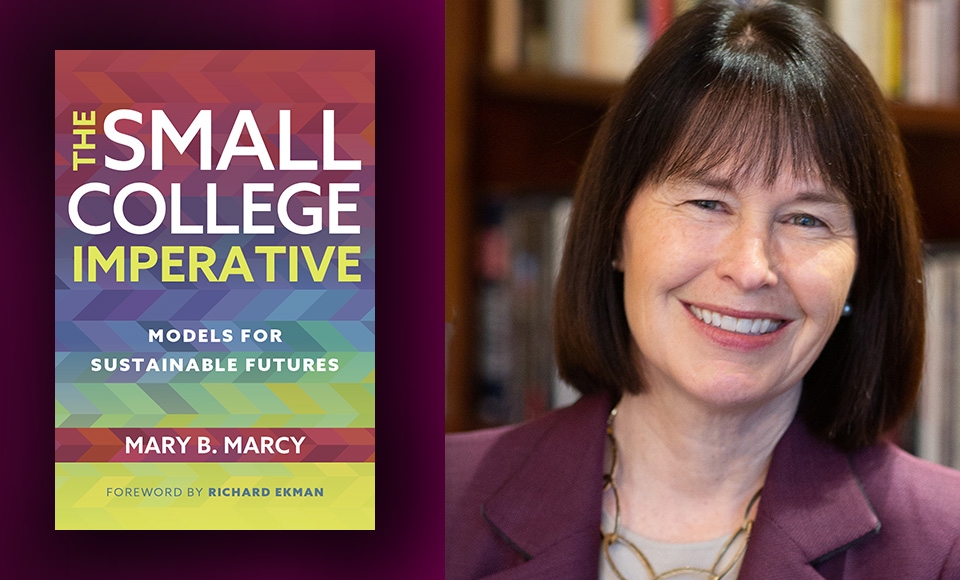Breadcrumbs
- News
- News Archive
- The Small College Imperative

Small colleges and universities such as Dominican University of California are at the forefront of innovative new programming focused on improving access and success for an increasingly diverse student body in a rapidly changing higher education landscape.
This innovation comes in the face of growing outside pressures, including changing student demographics, shifts in the market demand for traditional liberal arts programs, and the expanding use of technology in higher education.
In her new book “The Small College Imperative: Models for Sustainable Futures,” Dominican University’s President Mary B. Marcy, outlines some of the ways small colleges and universities are tackling these intensifying financial, demographic, and enrollment pressures in order to attract, serve, and retain students. For many, business as usual is no longer sustainable.
“Change and innovation are needed to meet the concerns of the present, and to face the rising challenges of the future,” President Marcy says. “Because small colleges are undergoing substantial pressure and facing considerable challenges, the sector is also alive with ideas for new approaches and creative responses.”
The Small College Imperative details innovations underway at 10 very different small colleges across the United States. The book outlines a continuum of five emerging business and educational models — traditional, integrated, distinctive program, expansion, and distributed — and examines both the advantages and challenges of each. Institutions profiled include Agnes Scott College, California Lutheran University, Chapman University, Colgate University, Dominican University of California, Furman University, Southern New Hampshire University, Trinity Washington University, Utica College, and Whitman College.
President Marcy notes that the most successful colleges are responding to the needs of current and emerging students, not the students that attended decades ago.
“This may seem simple, but it is not,” she says. Most small colleges were created to serve students who were 18-22 years old, able to attend college full time, likely middle class or above, and predominantly white.”
Today's students are much more likely to be working at least part-time, are increasingly from ethnically diverse backgrounds, are often the first in their family to attend college, and just as often are Pell-grant eligible, which indicates a high degree of financial need. The decline in traditional college-going age students is likely to increase in coming years.
Responses outlined in the book include:
“As our nation becomes more diverse, the opportunities provided by small colleges and universities become more essential,” President Marcy notes. “These campuses, with their capacity to respond to individual student needs and their commitment to an enduring notion of learning that moves beyond simply the functional to critical thinking, are at the core of a more hopeful culture for both individuals and our society.”
President Marcy’s research is rooted in Dominican University’s own success in serving this student population through its transformative signature program, The Dominican Experience.
Through the Dominican Experience, students receive personalized coaching; build meaningful relationships with professors, staff, community partners, and alumni; pursue self-directed work; and create digital portfolios that prove they're ready for what comes next. Dominican’s graduation and retention rates have increased dramatically since 2011 even as the student body has become more diverse, largely because of The Dominican Experience.